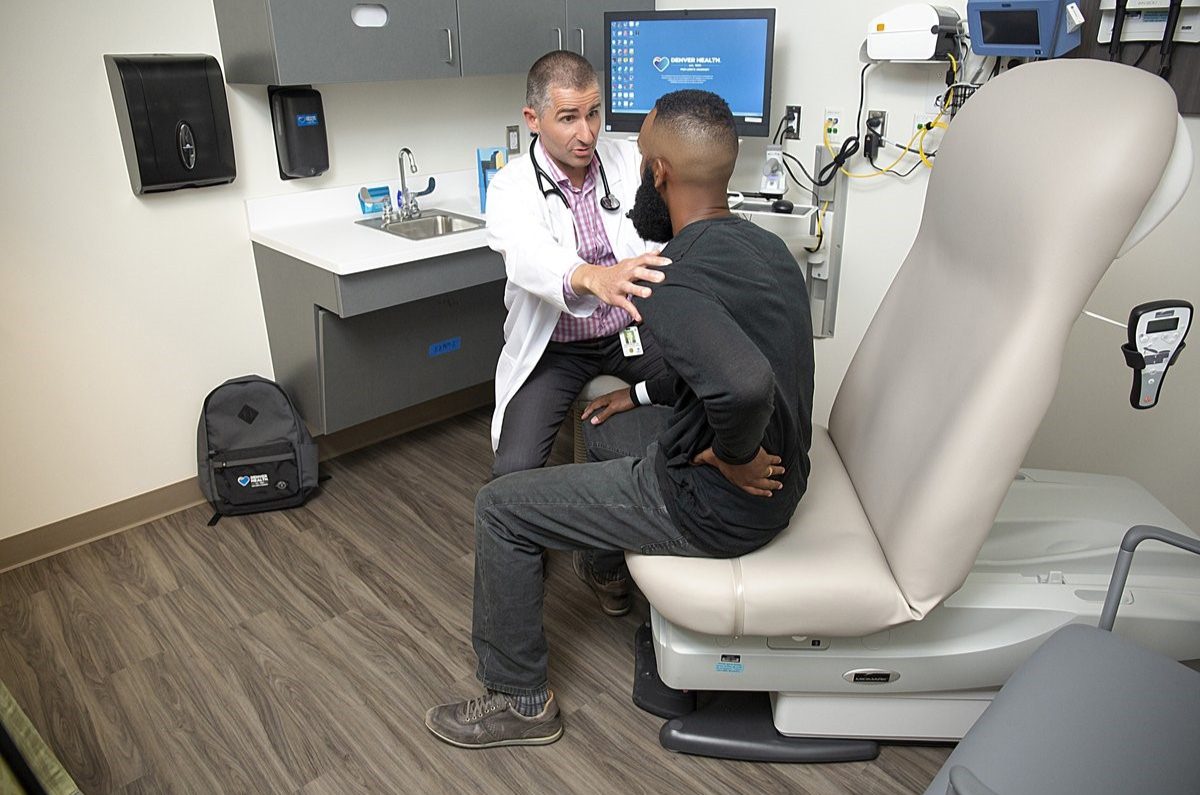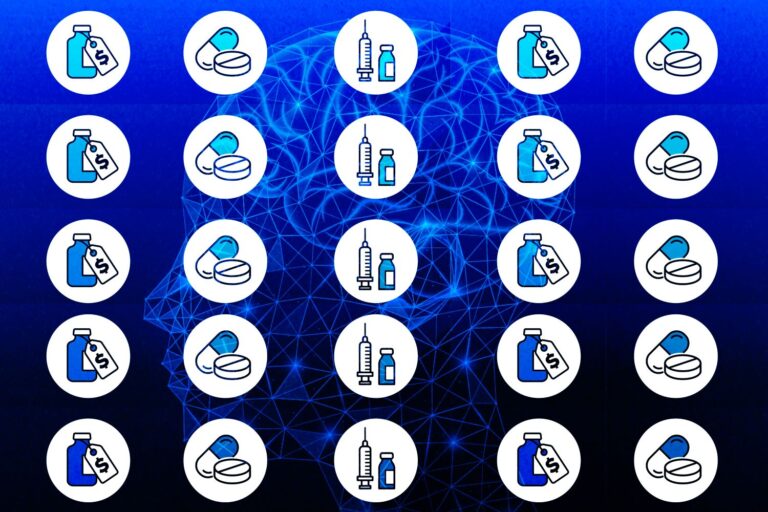Understanding Healthcare Business Models: Feasibility vs. Possibility
Developing a company requires some work for the entrepreneur about business planning, and within the healthcare sector, a highly innovative field, the exercise could appear complex. However, some tools such as healthcare business models and innovative approaches exist to support the entrepreneur or the business development manager in the design and the mapping of his or her activities, customers, channels, etc.
A business model is a high-level conceptual description of the activities of value creation (the creation of a product that meets customers’ needs), value capture (the marketing, support, and sale of the product), and value architecture (the chain of activities that link customers to the suppliers of a product). To start, you need to understand how the business model can affect your business. As the information revolution is slowing its influence in the business world, a new trend is emerging in the face of platform business models.
The Feasibility and Application of a Good Healthcare Business Model
The healthcare niche is seemingly stagnated when it comes to its transformation and adoption of the business model, to be specific: the canvas business model. It is important to understand that the models entail the intertwining of technology with the physical and biological aspects of living. It entails people relying on networks and various techniques to carry out activities that were not possible in the recent past. The state of the platform model in the healthcare sector remains largely underutilized. Despite the challenges, healthcare platform models have been established.

An organization’s healthcare business plan should be consistent with its overall mission and vision and should consider the competitive market. While the business plan is a written document, it is subject to change. Factors such as a shift in community demographics or competitors’ actions will require an organization to revisit its plan and revise it as necessary.
The typical business plan includes a detailed discussion of the proposed healthcare service, the identification of target markets, and financial projections. After the new service has been implemented, planners evaluate it over a multiyear. The initiative’s development can be monitored by setting targets and seeing whether those targets are met in that three-year time frame. Periodic evaluation over multiple years will return a fair, realistic assessment of the initial period, usually three years.
The 4 Important Elements Your Business Plan Must Cover
An example of business model is business model canvas. This is a template for developing new business models or documenting existing ones. It is designed for use by a group of people to either brainstorm a new business model, or to discuss, analyze, and change an existing business model. It splits a business model into four components — the client, the offer, resources, and finance — which are then further broken down into nine building blocks, each interacting with the other. The business model is a tool gathering all components of the strategy and the operations and helping the owners to plan their business. Instead of focusing on the 9 elements of the regular canvas business model, you can answer these 4 elements when it comes to writing a business plan.
A good business plan is always evolving, and every last detail is rarely ever set in stone. This means that the first version of your plan probably won’t be your last. As your business progresses and your ideas about it shift, it’s important to revisit your business plan from time to time to make sure it reflects those changes, keeping everything as accurate and up-to-date as possible.
Product-Market-Fit

A difficult decision for a startup or entrepreneur is understanding when your product is good enough to drive sustainable, scalable customer growth. Trying to scale too early can easily kill your startup. Using a survey asking the key question: How would you feel if you could no longer use the product with your customers gives you an objective measure?
Then, if you find that over 40 % say that they would be “very disappointed” without your product, there is a great chance you can build sustainable, scalable customer acquisition growth on this “must-have” product.
You may meet another questions such as: What painful problem are you solving for your patients? And what is your elegant solution to that problem? You can use these questions to cover why your new product delivers crazy value to your patients by breaking down the ways that it benefits your customers and meets a highly specific need for them. Besides, the market overview provides color around the industry that you will be competing in as it relates to your product or service.
Market overview will include statistics about industry size, growth rate, trends, and overall outlook. If this part of your business plan can be summed up in one word, it’s research. The idea is to gather as much raw data as you can to make the case for your readers that: This is a market big enough to get excited about. And, you can capture a big enough share of this market to get excited about. Now it’s time to use your product to get into the finer details around the mechanics of how it does so.
Key questions to consider:
- What are some of your product’s key features?
- How will customers use your product or service?
- Is there any technology underlying your solution you will need to explain for readers to fully understand what your company does and how it works?
If your product or service has some sort of proprietary element or patent at the core of what makes it work, you might be a bit hesitant to show your hand for fear that someone might run off with your idea. While this is a completely understandable concern, know that this pretty much never happens.
That being said, you can still give your readers a clear idea of how your product or service works by explaining it through the lens of how it relates to the problems that your customers face without giving up your secret sauce. Put another way, you don’t have to explicitly tell your readers the precise source code to your new app, but you will want to call attention to all of the great things it makes possible for your customers.
Resources and Revenue
Healthcare is a tricky market that can be highly segmented. There are multiple settings of care, which can dictate who uses your product, how cost-sensitive they are, who the payers are, and more. The following part will give you a little more insight into this industry market.
The evaluation of costs and benefits in healthcare, in general, is a perennial problem involving a large number of different stakeholders and sometimes conflicting views on the value of a particular course of action. Some have approached this problem by focusing only on the cost and benefits to healthcare providers, intending to develop business models that can be supported without external funding.
Most of the business models are not straightforward for-profit businesses. Although most require some sort of fee from the user, they also rely, directly or indirectly, on funding from governments or charities. Similarly, a number of the cases use activities in one area, such as education, to support or subsidize activities in another. The philosophical, moral, economic, and political arguments about the funding of healthcare are beyond the scope of this article; however, the prevailing view about the provision or, as some see it, the rationing of healthcare must be taken into account.
Physicians today find themselves at a disadvantage with the private and public insurance organizations they must deal with to be compensated for their services. The large payers are equipped with complex computing systems, large staffs of programmers and clerks, and a myriad of different payment plans and contracts to make the process of revenue collection very complex. Physicians, on the other hand, have small staffs, with little or no computing capability, and no time to deal with the complexities.
The majority of medical practices have solved the problem of collecting revenue by engaging a medical billing company to collect revenue for them, using professional staff and complex computer systems. While on the surface this seems to even the playing field, in reality, the physicians are still at a huge disadvantage, because the payers all have sophisticated business intelligence tools to ensure that they don’t pay one penny more than necessary and that they negotiate contracts that severely limit the physician’s ability to collect full compensation for services provided.
Customers Oriented

First, you need to answer the question: Who will be the end-users for your product? Take the time to think about all the people involved with the use of the product. This will be important as you think about how you produce impacts on the current standard of care. Typically, in medical settings, the end-user is not the purchaser or decision-maker. So, who makes purchasing decisions in the healthcare settings you are targeting? The next consideration is the payers. Who pays for your product? Does it need a reimbursement code or is it part of a bundled payment? What code exists and what is the typical payment? How will you get your produce reimbursed? All these questions are important and you need to know them before you head down any regulatory pathway.
Then, you need to identify the initial customers who will help you develop the product and provide ongoing feedback on iterations. In Silicon Valley, they call it ‘Customer Development’ and it is this concept that needs mastering to increase your probability of success.
You need feedback quickly; you need to know why a certain customer segment (who is already proven to get your problem) likes or does not like your product so that you know where to focus your efforts. Only by building a community of real users and providing value, you can get objective feedback. The reality is that you do not necessarily get paid for the value of the thing you are creating. You get paid for the value that the market assigns to it.
Technology Adoption Options
Given that technology is often put forward to address the problems of healthcare provision, it is interesting to note that in most of the companies, the IT platforms are either relatively simple, standard technologies or are merely additions to existing systems or networks. In most cases, the key resources are human, such as doctors, health workers, or counselors, or links to broader networks that can be used to leverage existing resources, such as universities, pharmacies, or volunteer groups.
The healthcare industry faces similar challenges today. There has been a long-standing approach to customization in the industry due to the lack of robust technology to deliver the necessary functionality. Healthcare practices must adopt a strategy for IT planning that carefully considers the option of outsourcing parts of their operations to third party suppliers – who can deliver high-quality service, provide the IT platform needed, and all for less than what an internal solution would cost.
The final piece of advice is the technology adoption strategy. With all the possibilities available in the industry today, there is an immediate conflict between the cost of implementing and supporting all the functionality and the desire to start taking advantage of the new solutions. Most successful companies have adopted the new technologies in a well thought out and prioritized approach. These companies prioritized the implementation based on cost-benefit analysis so that the functionality that delivered the greatest returns to the business could be enabled quickly, while the less beneficial initiatives are pushed out over time.
In addition to the cost-benefit of each initiative, it is important to consider the impact on patients and their willingness to adopt the new processes and technology. A practice with older patients may opt to postpone patient portals a bit, while practice with mostly young patients may choose to make the patient portal a priority. The caveat here is that even practice with older patients needs to adopt the patient portal, or they will be at a competitive disadvantage in attracting new, young patients to the practice.
The IT Plan must consider the technology trends in each key business area and then map the business needs to an IT platform and architecture that will accommodate current needs and enable scalability to meet future needs. To help you develop a planning template which could provide to each of our practices, Mr. Seale – President of Orion HealthCorp has developed these IT planning templates for the large pediatric practices that use these templates for their RCM clients to whom they also provide practice management services. The key planning categories are listed below:
- Patient-Centric Applications
- Clinical Centric Applications
- Provider Centric Applications
- Practice Management Centric Applications
- Technology Infrastructure
Patient-Centric Applications include patient portals and mobile apps for scheduling and changing appointments, renewing prescriptions, paying bills and modifying demographic information. Patient portals are also utilized for providing patient self-service for medical records access. The planning process must consider if and when these patient-oriented functionalities should be made available to our patients.
The IT infrastructure must be part of the planning process. Without an integrated and holistic approach for the IT infrastructure, integration becomes an expensive and difficult undertaking. Lack of planning here also results in poor systems performance and costly upgrades in the future.
The Future of Sustainable Business Models in Healthcare Space
Most players within healthcare industry over the past these years has focused on the many negative forces combining to reduce the earnings of Healthcare practices and Healthcare professionals. There is no doubt that these dire warnings and reports of actual negative impacts are accurate and precise. There is no shortage of evidence to support the claims of industry pundits that dramatic changes to the healthcare industry were just around the corner and across the board cuts in reimbursements, increased regulatory complexity, and rising costs would dramatically reduce Industry profitability.
The healthcare industry is being buffeted by a tide of rising costs, while at the same time government and private payers are making the reimbursement process more complex and less lucrative for practitioners who have invested heavily in their education and their practices.
Foreign competition, deregulation, unions, and new technologies were driving costs up and profits downward. The companies that survived the turmoil of those gut-wrenching days have dramatically lowered their costs, increased the quality of their products. The winners were able to become profitable by changing their business models. The innovators and visionaries in the Healthcare Industry are already working on a new business model.
From the standpoint of practice managers from all types and sizes of practices, the most common concern is that the managers are unsure whether or not their organization will be able to make this transition. Clearly, the transition to the new business model is not viewed as low risk and high reward undertaking.
Driven by this industry pressure, there is an increasing move toward partnering with large service providers to leverage their technology, professional expertise in coding, billing, finance and accounting, practice management, compliance, and the deep knowledge of the nuances of each medical specialty provided by their practice management consultants.
It is already possible to describe the basic characteristics of the successful practice of the future. By looking at the solution for business model, it becomes clear that the new model for successful medical practices will have the following common characteristics:
#1 Patient Focus
- Patient portal for service scheduling and records lookup
- Patient information collected and validated before a visit
- Patient information updated in real-time (clinical and financial information)
- Quality of service tracked and recorded by the patient
#2 Electronically enabled
- Electronic Health Records
- Electronic Procedure and Diagnosis Documentation
- Demographic information validated by external databases (used by financial institutions today)
- Fully integrated systems (PM –> EHR –> RCM –> CMS/Insurance/etc.)
- No duplicate data entry, data corrected in one system seamlessly passed to all others
- Business Intelligence and Analytics
#3 Process Oriented
- Pre-visit process and activities
- Visit processes (clinical and financial)
- Charge and Billing Process
- Payments and Collections Process
- Insurance Processes (credentialing and contracting)
- Administration (Management, HR/Payroll, Accounting/Finance, etc.)
#4 Quality and Performance Focused:
- Compliance Management
- Performance Metrics and Key Performance Indicators
- Quality Management and continuous improvement
- Information based decision making
Certainly, some aspects of these business models are relevant to a discussion of how best to provide healthcare in the 21st century. However, it seems to be tied to the particular social and economic conditions that possobly pose challenges to healthcare services providers.
The Bottom Line
Although, business models may travel well, the challenges of transforming a business model designed to deal with or the problems of aging patients with chronic conditions in the United States are considerable. Information technology and appropriate business models surely are part of the solution to the effective and efficient delivery of healthcare. Ultimately, however, the key to overcoming any problems encountered along the way to achieving that goal may lie in the next step: the legal and social environment in which these decisions take place.









